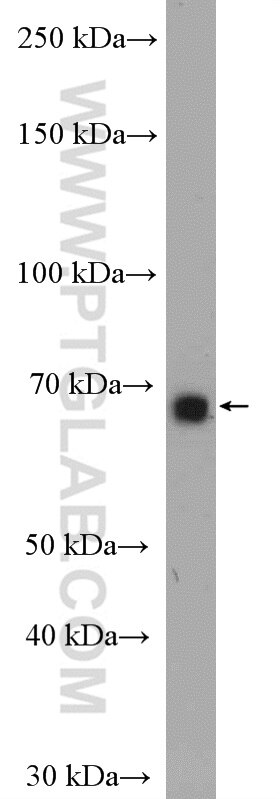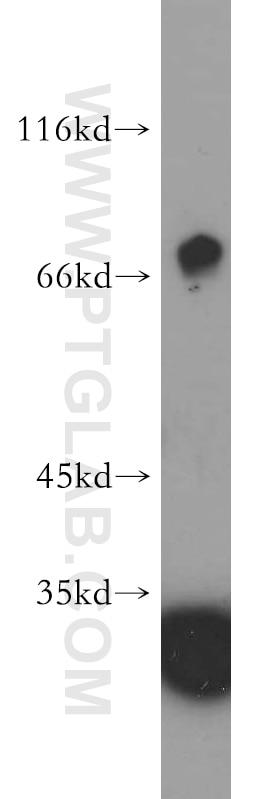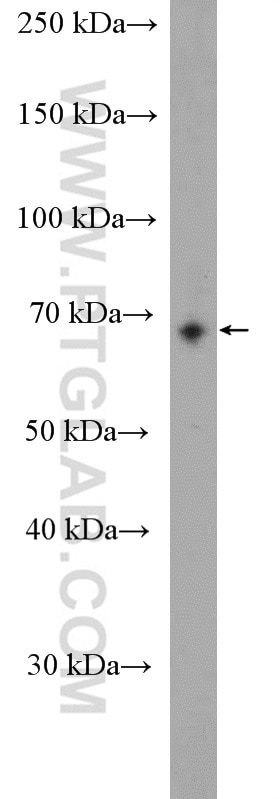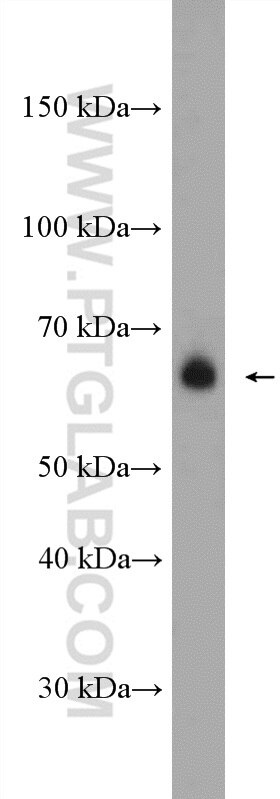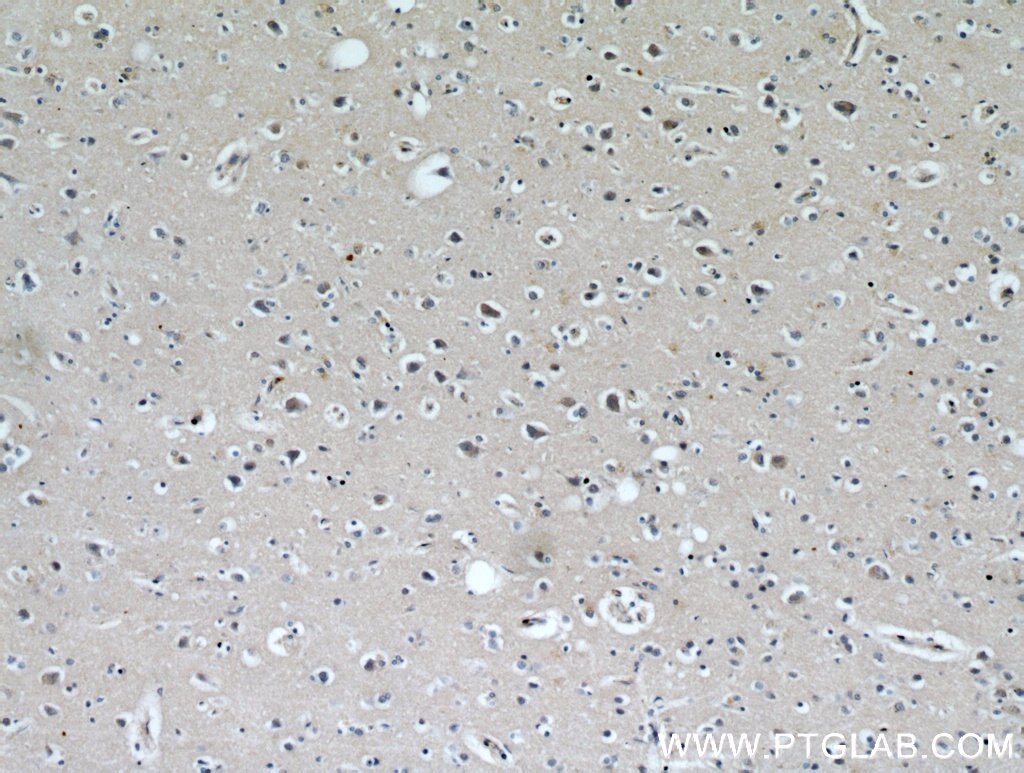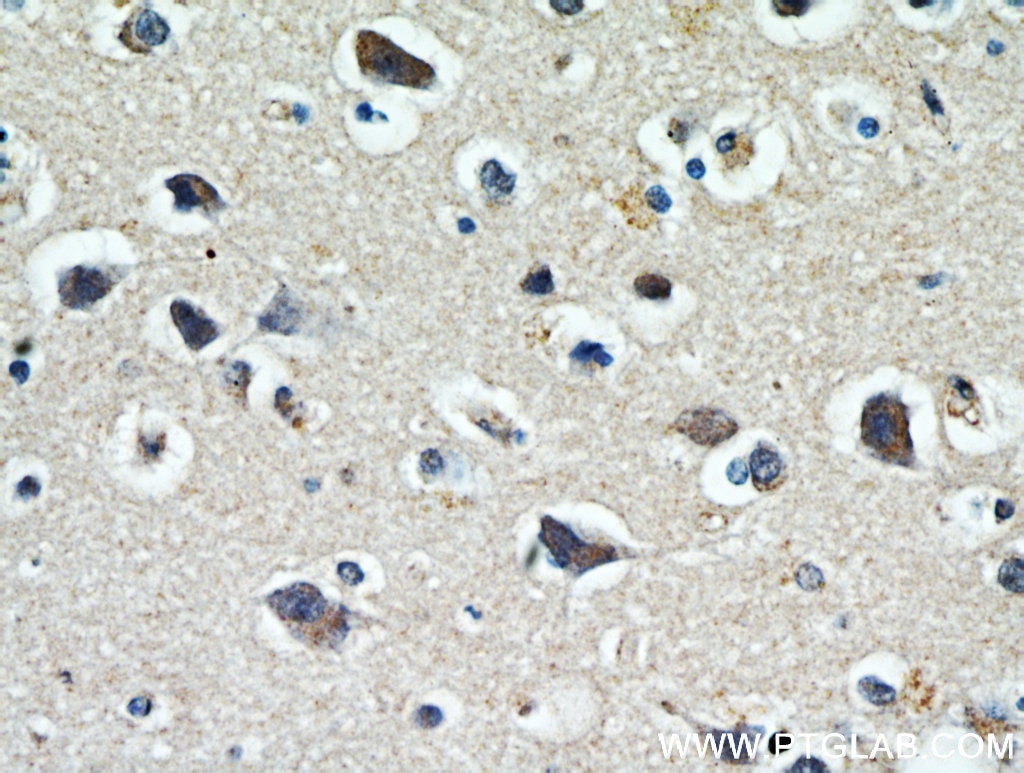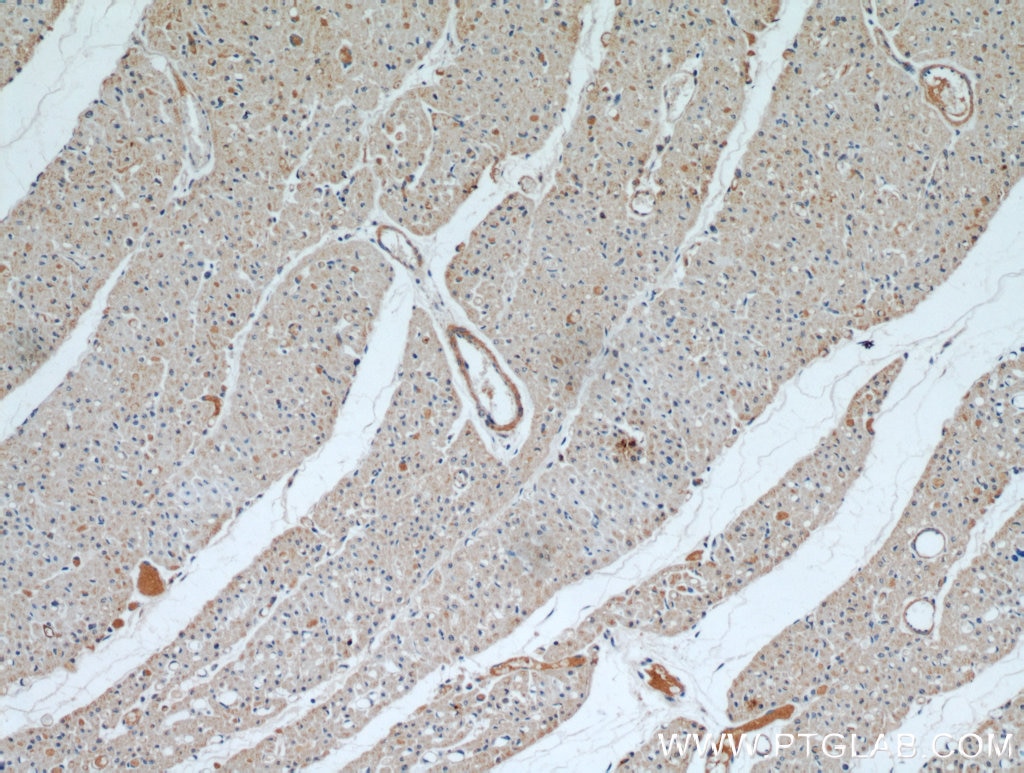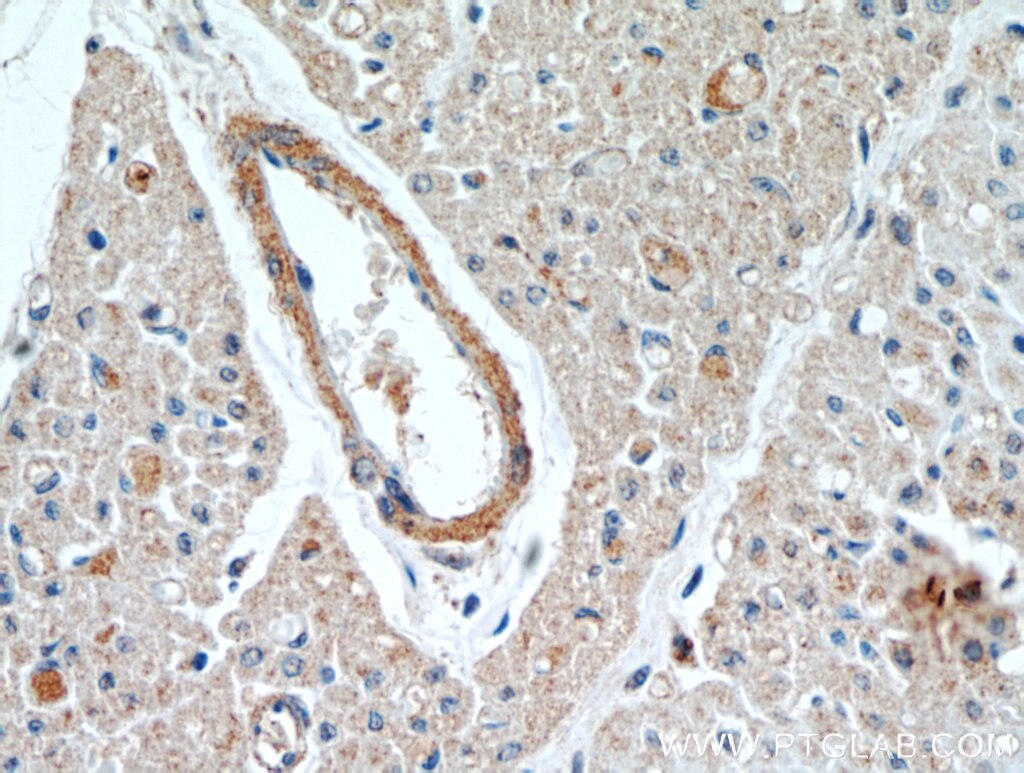Anticorps Polyclonal de lapin anti-WBSCR17
WBSCR17 Polyclonal Antibody for WB, IHC, ELISA
Hôte / Isotype
Lapin / IgG
Réactivité testée
Humain, rat, souris
Applications
WB, IHC, ELISA
Conjugaison
Non conjugué
N° de cat : 21280-1-AP
Synonymes
Galerie de données de validation
Applications testées
| Résultats positifs en WB | tissu cérébral de souris, cellules A549, tissu cérébral humain, tissu pulmonaire de souris |
| Résultats positifs en IHC | tissu cérébral humain, tissu cardiaque humain il est suggéré de démasquer l'antigène avec un tampon de TE buffer pH 9.0; (*) À défaut, 'le démasquage de l'antigène peut être 'effectué avec un tampon citrate pH 6,0. |
Dilution recommandée
| Application | Dilution |
|---|---|
| Western Blot (WB) | WB : 1:500-1:2000 |
| Immunohistochimie (IHC) | IHC : 1:20-1:200 |
| It is recommended that this reagent should be titrated in each testing system to obtain optimal results. | |
| Sample-dependent, check data in validation data gallery | |
Informations sur le produit
21280-1-AP cible WBSCR17 dans les applications de WB, IHC, ELISA et montre une réactivité avec des échantillons Humain, rat, souris
| Réactivité | Humain, rat, souris |
| Hôte / Isotype | Lapin / IgG |
| Clonalité | Polyclonal |
| Type | Anticorps |
| Immunogène | WBSCR17 Protéine recombinante Ag15792 |
| Nom complet | Williams-Beuren syndrome chromosome region 17 |
| Masse moléculaire calculée | 598 aa, 68 kDa |
| Poids moléculaire observé | 70~90 kDa |
| Numéro d’acquisition GenBank | BC069624 |
| Symbole du gène | WBSCR17 |
| Identification du gène (NCBI) | 64409 |
| Conjugaison | Non conjugué |
| Forme | Liquide |
| Méthode de purification | Purification par affinité contre l'antigène |
| Tampon de stockage | PBS with 0.02% sodium azide and 50% glycerol |
| Conditions de stockage | Stocker à -20°C. Stable pendant un an après l'expédition. L'aliquotage n'est pas nécessaire pour le stockage à -20oC Les 20ul contiennent 0,1% de BSA. |
Informations générales
WBSCR17, also known as GALNT17, which encodes a brain-expressed N-acetylgalactosaminyl transferase (GalNAcT), is located at the distal edge of a region that is commonly deleted or duplicated in Williams Beuren Syndrome (WBS), a developmental disorder with motor and coordination problems, impaired visuospatial memory, and abnormal social interaction (PMID: 31554716). WBSCR17 loss-of-function has significant effects on cerebellar development, and is associated with phenotypes including developmental delay, deficits in motor coordination, reduced exploratory activity, and impaired social behavior (PMID: 22787146). With the calculated molecular mass of recombinant WBSCR17 being 68 kDa, the 70-90-kDa glycoproteins could also be detected due to post-translational modifications (PMID: 22787146).
Protocole
| Product Specific Protocols | |
|---|---|
| WB protocol for WBSCR17 antibody 21280-1-AP | Download protocol |
| IHC protocol for WBSCR17 antibody 21280-1-AP | Download protocol |
| Standard Protocols | |
|---|---|
| Click here to view our Standard Protocols |
